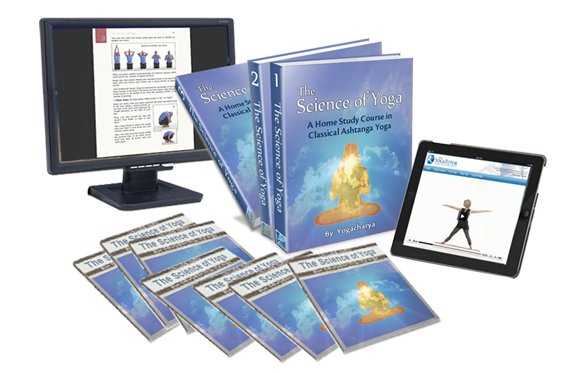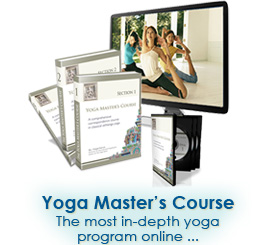[ Excerpt from The Science of Yoga, page 55 ]
"Prana is the fundamental basis of whatever is, was and shall be."
~ ARTHARVA VEDA
"When the breath wanders, the mind is unsteady, but when the breath is still, so also the mind of the Yogi obtains the power of stillness. Therefore, the breath should be restrained."
~ Hatha Yoga Pradipika
The main points of absorption of prana into the being are:
- The nervous endings of the nostrils. One must inhale like they are smelling a flower (i.e., flare open and pull up the nostrils). Here we affect the two main nadis (pranic channels) of ida (left) and pingala (right).
- The alveoli of the lungs, where there are also a vast number of nadis or subtle energy channels.
- The tongue, where there are a lot of nadis as well.
- The skin.
A healthy person breathes in and out about 21,600 times per day. According to the GHERANDA SAMHITA:
"By slowing the rhythm of your breath, the vital energy will reach high levels; by increasing the frequency of the breath, this energy of life will diminish."
The yogis consider that the breath is an extremely important factor in health and longevity. Here, Gheranda suggests that not only are full breaths important to health and vitality, but also that we need necessarily take fewer, or rather, slower and longer breaths as well.
This small clue points us toward an interesting consideration. If we look into the various breathing patterns of creatures in nature, we see some interesting parallels between breath and behavioural characteristics. For instance, those creatures that are easily excitable (quick to jump, or edgy), breathe with higher rapidity.
A mouse takes 50 breaths per minute and a monkey and chicken both around 30. Conversely, the docile horse takes 16 breaths, an elephant 10, and the most immoveable of all creatures, the tortoise, a mere 3 breaths per minute!! When we consider longevity, the maximum lifespan of a mouse is a meagre 3 to 4 years, compared to the elephant which lives on average for 70 years. The lifespan of a tortoise is 193 years!
You’ll no doubt notice that when you find yourself in a tense, anxious or high pressure situation, your breathing rate increases dramatically. On the contrary, when you’re relaxed in peaceful surroundings your breath slows to a calm, measured rate.
Now do you know why stress will eventually kill you?
On average, human beings take approximately 15 breaths per minute. That number can vary from anywhere between 11 or 12, up to a distressing 20–24 breaths per minute in the most unhealthy of individuals.
Though I am unaware of any scientific studies that relate rate of breathing to average lifespan, I would not be surprised to see a striking correlation between the two.
There has always been scepticism from Westerners concerning talk of yogis and great masters who have lived for hundreds of years. It has always been known that mastery of the breath is essential to such achievements and those who have attained such longevity have without a doubt mastered the breath. There are even advanced pranayama practices requiring only one breath every three minutes (or longer!)...
[Continued...]
---------------------
NOTE: This yoga article is an excerpt from The Science of Yoga, an online yoga training program with streaming yoga videos and 600 pages of step-by-step yoga instruction.

"The Science of Yoga is a course worthy of
leather binding and an honored place in the
finest libraries in the world
... It is indeed a masterful work."
Dr. John Michael Christian
AwakeningWithYoga.com
Learn More About
The Science of Yoga Course
|






